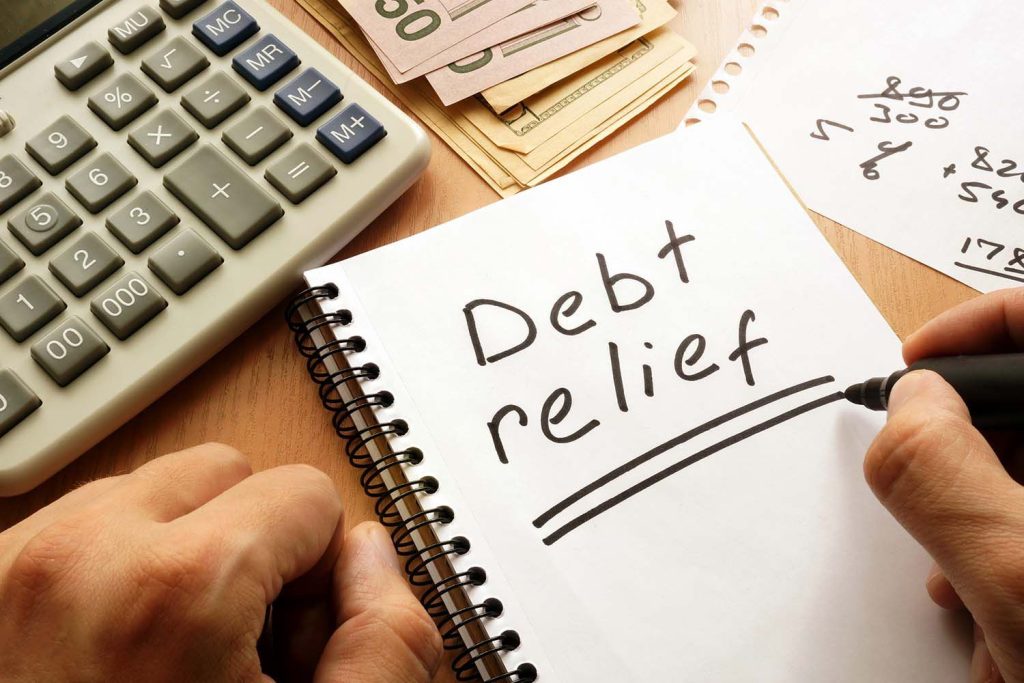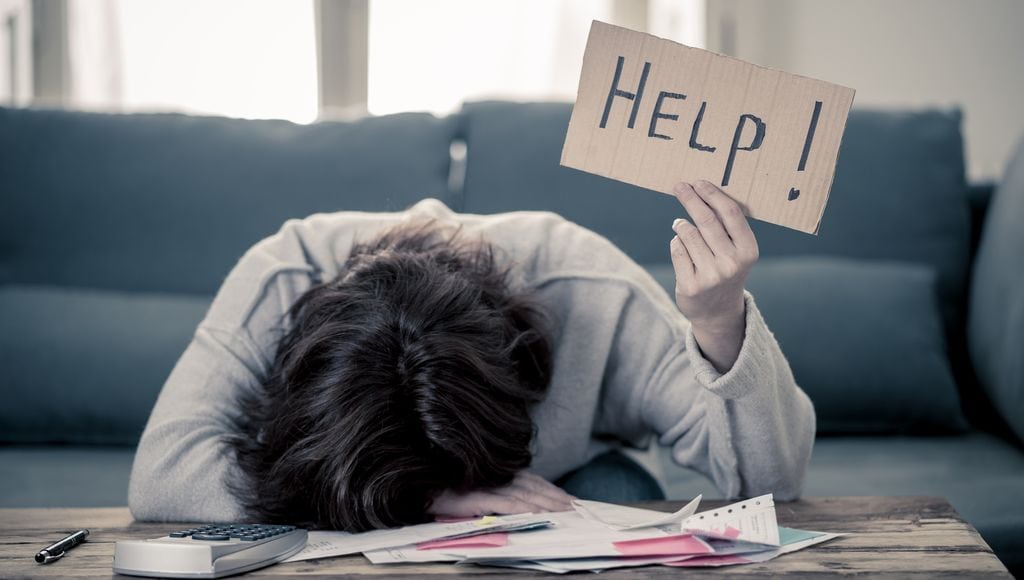-
Table of Contents
- Introduction
- What is a Consumer Proposal and How Does it Work?
- The Benefits of a Consumer Proposal for Debt Relief
- How to Determine if a Consumer Proposal is Right for You
- The Pros and Cons of a Consumer Proposal
- How to Negotiate a Consumer Proposal
- What to Expect During the Consumer Proposal Process
- How to Prepare for a Consumer Proposal
- The Impact of a Consumer Proposal on Your Credit Score
- How to Rebuild Your Credit After a Consumer Proposal
- Common Misconceptions About Consumer Proposals
- Conclusion
Consumer Proposals; How they work
A consumer proposal is a legally binding agreement between a debtor and their creditors that allows the debtor to pay off their debt over a period of time. It is a form of debt relief that can help individuals who are struggling to pay off their debt and are unable to make payments on their own. Consumer proposals are an effective debt relief program because they provide a way for debtors to pay off their debt without having to declare bankruptcy. They also provide a way for creditors to receive some of the money they are owed, while allowing the debtor to keep some of their assets. Consumer proposals can be a great way to get out of debt and start fresh.
What is a Consumer Proposal and How Does it Work?
A consumer proposal is a legally binding agreement between a debtor and their creditors. It is an alternative to bankruptcy and is designed to help individuals who are unable to pay their debts in full.
Under a consumer proposal, the debtor agrees to pay a portion of their debt over a period of time, usually up to five years. The amount of the payment is based on the debtor’s ability to pay and is negotiated with the creditors. The debtor must also agree to certain conditions, such as not taking on any new debt during the repayment period.
Once the proposal is accepted by the creditors, the debtor is protected from legal action by the creditors. The debtor is also protected from wage garnishment and collection calls.
The consumer proposal must be administered by a Licensed Insolvency Trustee (LIT). The LIT will review the debtor’s financial situation and negotiate with the creditors on the debtor’s behalf. The LIT will also ensure that the debtor meets all of the conditions of the proposal.
Once the proposal is accepted, the debtor will make regular payments to the LIT, who will then distribute the payments to the creditors. Once the proposal is completed, the remaining debt is forgiven.
Consumer proposals can be a good option for individuals who are unable to pay their debts in full. It can help them avoid bankruptcy and get back on track financially. However, it is important to understand the terms of the proposal and the consequences of not meeting the conditions.
The Benefits of a Consumer Proposal for Debt Relief
A consumer proposal is a legally binding agreement between a debtor and their creditors that allows for the restructuring of debt. It is an effective way to reduce debt and avoid bankruptcy.
The primary benefit of a consumer proposal is that it allows debtors to reduce their overall debt load. This is done by negotiating with creditors to reduce the amount of debt owed, as well as the interest rate and payment terms. This can result in a significant reduction in the amount of money owed, making it easier for debtors to manage their finances.
Another benefit of a consumer proposal is that it can help protect debtors from creditors. Once a consumer proposal is accepted, creditors are legally bound to the terms of the agreement and cannot take any further action against the debtor. This can provide debtors with peace of mind and the ability to focus on repaying their debt without fear of legal action.
Finally, a consumer proposal can help debtors rebuild their credit score. Once the proposal is accepted, the debt is reported as “settled” on the debtor’s credit report. This can help debtors improve their credit score over time, allowing them to access better loan terms in the future.
Overall, a consumer proposal is an effective way to reduce debt and avoid bankruptcy. It can help debtors reduce their overall debt load, protect them from creditors, and rebuild their credit score. For these reasons, a consumer proposal can be a great option for those looking for debt relief.
How to Determine if a Consumer Proposal is Right for You
If you are struggling with debt, a consumer proposal may be the right solution for you. A consumer proposal is a legally binding agreement between you and your creditors that allows you to pay off your debt over a period of time. It is important to understand the process and determine if a consumer proposal is the right solution for your financial situation.
First, you should assess your financial situation. Take a look at your income, expenses, and debt. Consider how much you can realistically afford to pay each month. You should also consider how long it will take you to pay off your debt in full.
Next, you should speak to a Licensed Insolvency Trustee (LIT). An LIT is a professional who is licensed to administer consumer proposals. They will review your financial situation and help you determine if a consumer proposal is the right solution for you.
Once you have decided to pursue a consumer proposal, you will need to complete a proposal document. This document outlines the terms of your agreement with your creditors. It will include the amount you will pay each month, the length of the repayment period, and any other terms that have been agreed upon.
Once the proposal is complete, it will be sent to your creditors for approval. If your creditors accept the proposal, it will become legally binding. You will then be required to make the agreed-upon payments each month until the debt is paid in full.
A consumer proposal can be a great way to get out of debt and regain financial stability. However, it is important to understand the process and determine if it is the right solution for your financial situation. Speak to a Licensed Insolvency Trustee to learn more about consumer proposals and decide if it is the right option for you.
The Pros and Cons of a Consumer Proposal
A consumer proposal is a legally binding agreement between a debtor and their creditors that allows the debtor to pay off their debt over a period of time. It is an alternative to bankruptcy and can be a viable option for those who are struggling to pay off their debt. However, there are both pros and cons to consider before entering into a consumer proposal.
Pros
One of the main advantages of a consumer proposal is that it can help to reduce the amount of debt owed. The debtor and their creditors will negotiate a payment plan that is affordable for the debtor and acceptable to the creditors. This can help to reduce the amount of debt owed and make it easier for the debtor to pay off their debt.
Another advantage of a consumer proposal is that it can help to protect the debtor’s assets. In a consumer proposal, the debtor’s assets are protected from creditors and cannot be seized. This can help to ensure that the debtor’s assets are not taken away in order to pay off their debt.
Finally, a consumer proposal can help to improve the debtor’s credit score. Once the consumer proposal is completed, the debtor’s credit score will begin to improve. This can help the debtor to access better credit terms in the future.
Cons
One of the main disadvantages of a consumer proposal is that it can be difficult to negotiate with creditors. Creditors may be unwilling to accept a consumer proposal and may demand more money than the debtor can afford. This can make it difficult for the debtor to reach an agreement with their creditors.
Another disadvantage of a consumer proposal is that it can be expensive. The debtor will need to pay a fee to the trustee who is managing the consumer proposal. This fee can be expensive and can add to the amount of debt that the debtor is already struggling to pay off.
Finally, a consumer proposal can have a negative impact on the debtor’s credit score. Although the credit score will improve once the consumer proposal is completed, it can take several years for the credit score to fully recover. This can make it difficult for the debtor to access better credit terms in the future.
In conclusion, a consumer proposal can be a viable option for those who are struggling to pay off their debt. However, it is important to consider both the pros and cons before entering into a consumer proposal.
How to Negotiate a Consumer Proposal
Negotiating a consumer proposal is a complex process that requires careful consideration and planning. It is important to understand the process and the implications of a consumer proposal before entering into negotiations.
The first step in negotiating a consumer proposal is to understand the process. A consumer proposal is an agreement between a debtor and their creditors to settle their debts. The debtor agrees to pay a portion of their debt over a period of time, usually five years. The debtor must also agree to certain terms and conditions, such as not taking on any new debt during the repayment period.
The next step is to determine the amount of the proposal. This should be based on the debtor’s ability to pay and the amount of debt owed. It is important to be realistic when determining the amount of the proposal, as creditors may reject a proposal that is too low.
Once the amount of the proposal has been determined, the debtor must contact their creditors to negotiate the terms of the proposal. This is a critical step in the process, as creditors may reject the proposal if they feel it is not in their best interest. It is important to be prepared to negotiate and to be willing to compromise.
The final step is to submit the proposal to the creditors. This is done through a Licensed Insolvency Trustee (LIT). The LIT will review the proposal and submit it to the creditors for approval. Once the proposal is approved, the debtor must make the payments as agreed.
Negotiating a consumer proposal is a complex process that requires careful consideration and planning. It is important to understand the process and the implications of a consumer proposal before entering into negotiations. By understanding the process and being prepared to negotiate, debtors can successfully negotiate a consumer proposal that is beneficial to both parties.
What to Expect During the Consumer Proposal Process
The consumer proposal process is a legal process that allows individuals to make an offer to their creditors to settle their debts. It is a viable alternative to bankruptcy and can help individuals get out of debt and rebuild their credit.
The process begins with a consultation with a Licensed Insolvency Trustee (LIT). During the consultation, the LIT will review your financial situation and discuss the options available to you. They will explain the consumer proposal process in detail and answer any questions you may have.
Once you decide to proceed with a consumer proposal, the LIT will prepare the necessary paperwork and submit it to your creditors. This paperwork includes a detailed description of your financial situation, a proposed repayment plan, and a statement of your assets and liabilities.
Your creditors will then review the proposal and decide whether to accept or reject it. If they accept the proposal, they will enter into a legally binding agreement with you. This agreement will outline the terms of the repayment plan, including the amount you will pay each month and the length of the repayment period.
Once the agreement is in place, you will be required to make the agreed-upon payments on time. If you fail to make a payment, your creditors may take legal action against you.
The consumer proposal process can take several months to complete. During this time, you will be required to provide your LIT with updated financial information. This information will be used to ensure that the repayment plan is still feasible and that you are able to make the payments.
At the end of the process, your creditors will be paid in full and your debts will be discharged. This will allow you to start rebuilding your credit and move forward with your financial goals.
How to Prepare for a Consumer Proposal
A consumer proposal is a legally binding agreement between you and your creditors that allows you to pay off your debts over a period of time. It is an alternative to bankruptcy and can help you avoid the negative consequences of filing for bankruptcy. Preparing for a consumer proposal can be a daunting task, but with the right information and guidance, you can make the process easier.
1. Gather Your Financial Information: Before you can begin the process of filing a consumer proposal, you need to gather all of your financial information. This includes your income, expenses, assets, and liabilities. You should also have a list of all of your creditors and the amount of money you owe them.
2. Calculate Your Debt-to-Income Ratio: Your debt-to-income ratio is an important factor in determining whether or not you qualify for a consumer proposal. To calculate your debt-to-income ratio, divide your total monthly debt payments by your total monthly income. If your debt-to-income ratio is higher than 50%, you may not qualify for a consumer proposal.
3. Speak to a Licensed Insolvency Trustee: A Licensed Insolvency Trustee (LIT) is a professional who is licensed to administer consumer proposals. They can help you understand the process and determine if a consumer proposal is the right option for you.
4. Prepare a Budget: A budget is an important tool for managing your finances and preparing for a consumer proposal. A budget will help you track your income and expenses and identify areas where you can cut back.
5. Negotiate with Your Creditors: Once you have gathered all of your financial information and spoken to an LIT, you can begin to negotiate with your creditors. You may be able to negotiate a lower interest rate or a reduced payment plan.
6. File Your Proposal: Once you have negotiated with your creditors and prepared a budget, you can file your consumer proposal. Your LIT will help you complete the paperwork and submit it to the court.
By following these steps, you can prepare for a consumer proposal and take control of your financial future.
The Impact of a Consumer Proposal on Your Credit Score
A consumer proposal is a legally binding agreement between a debtor and their creditors to settle a debt. It is an alternative to bankruptcy and can be a viable option for those who are unable to pay their debts in full. However, it is important to understand the impact a consumer proposal can have on your credit score.
When you enter into a consumer proposal, it will be reported to the credit bureaus and will remain on your credit report for up to three years after the proposal is completed. This will have a negative impact on your credit score, as it will indicate to potential lenders that you have had difficulty managing your finances in the past.
The exact impact of a consumer proposal on your credit score will depend on your current credit score and the amount of debt you are proposing to settle. Generally speaking, the higher your credit score is before entering into a consumer proposal, the more it will be affected.
In addition to the initial impact on your credit score, a consumer proposal can also make it more difficult to obtain credit in the future. Lenders may be hesitant to extend credit to someone who has previously had difficulty managing their finances.
It is important to note that while a consumer proposal can have a negative impact on your credit score, it can also be a viable option for those who are unable to pay their debts in full. A consumer proposal can help you avoid bankruptcy and can provide a way to settle your debts in a manageable way.
Overall, it is important to understand the impact a consumer proposal can have on your credit score. While it can have a negative impact, it can also be a viable option for those who are unable to pay their debts in full.
How to Rebuild Your Credit After a Consumer Proposal
Rebuilding your credit after a consumer proposal can be a daunting task, but it is possible. A consumer proposal is a legally binding agreement between you and your creditors that allows you to pay off your debt over a period of time. While this can be a great way to get out of debt, it can also have a negative impact on your credit score. Fortunately, there are steps you can take to rebuild your credit and get back on track.
The first step is to make sure you make all of your payments on time. This is the most important factor in rebuilding your credit. Make sure you pay all of your bills on time, including your consumer proposal payments. This will show creditors that you are responsible and can be trusted to make payments.
The next step is to start building a positive credit history. This can be done by applying for a secured credit card or a small loan. Make sure you make all of your payments on time and keep your balances low. This will help to show creditors that you are responsible and can be trusted to make payments.
You should also consider getting a copy of your credit report and checking it for any errors. If you find any errors, dispute them with the credit bureaus. This will help to improve your credit score.
Finally, you should consider talking to a credit counsellor. A credit counsellor can help you create a budget and develop a plan to pay off your debt. They can also help you understand how to rebuild your credit and provide advice on how to maintain a good credit score.
Rebuilding your credit after a consumer proposal can be a long and difficult process, but it is possible. By following these steps, you can start to rebuild your credit and get back on track.
Common Misconceptions About Consumer Proposals
Consumer proposals are a viable debt relief option for many Canadians, but there are some common misconceptions about them that can lead to confusion. Understanding the facts about consumer proposals can help individuals make informed decisions about their financial future.
1. Consumer Proposals are Bankruptcy: A consumer proposal is not the same as filing for bankruptcy. A consumer proposal is a legally binding agreement between a debtor and their creditors that allows the debtor to pay back a portion of their debt over a period of time. Bankruptcy, on the other hand, is a legal process that requires the debtor to surrender their assets to a trustee who will then distribute the assets to creditors.
2. Consumer Proposals are Only for People with High Debt: Consumer proposals are available to individuals with any amount of debt, not just those with high debt. The amount of debt that can be included in a consumer proposal is determined by the debtor’s income and expenses.
3. Consumer Proposals are Expensive: Consumer proposals are not necessarily expensive. The cost of a consumer proposal depends on the amount of debt and the debtor’s financial situation. In some cases, the cost of a consumer proposal may be less than the cost of making regular payments on the debt.
4. Consumer Proposals are Permanent: Consumer proposals are not permanent. Once the terms of the consumer proposal have been fulfilled, the debtor is no longer obligated to make payments and the debt is considered to be paid in full.
5. Consumer Proposals are Easy to Get Out of: Consumer proposals are legally binding agreements and cannot be easily terminated. If a debtor fails to make payments or fails to meet the terms of the consumer proposal, the creditors may take legal action to collect the debt.
By understanding the facts about consumer proposals, individuals can make informed decisions about their financial future. Consumer proposals can be a viable debt relief option for many Canadians, but it is important to understand the facts before making any decisions.
Conclusion
Consumer Proposals are an effective debt relief program that can help individuals who are struggling with debt. They provide a way for individuals to negotiate with their creditors to reduce their debt and make payments over a period of time. This can help individuals to avoid bankruptcy and get back on track financially. Consumer Proposals are a great way to get out of debt and can be a great option for those who are struggling with debt.









